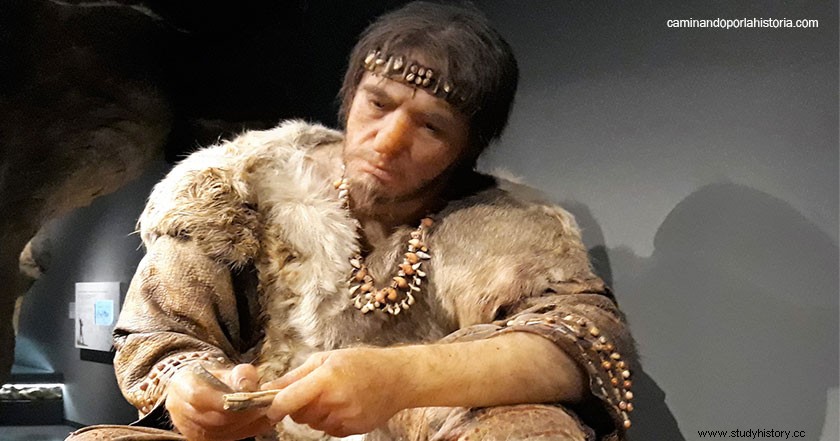
The visitor who arrives in present-day Cantabria, soon You will realize that you are stepping on one of the territories where our ancestors left a greater record of their status as artists. Hundreds of caves are dotted with the richest prehistoric paintings, and ten of them have been considered World Heritage Sites. These paintings are about 40,000 years old, but it will be the final periods of the Paleolithic when their artists offer us the most spectacular examples. Today in Walking through History, we will try to introduce you a little better to these ancestors who inhabited the Cantabrian coast, at the end of the Paleolithic.
The Magdalenian.
Although in this article we are going to stick mainly to the geographical area of the Cantabrian coast, on the other hand the most prolific place in terms of archaeological remains from the period, we must start by saying that we are facing the last great Paleolithic culture of Western Europe. Remains assignable to the Magdalenian period have been found in the current countries of France, Germany, Switzerland, Portugal and Spain.
About the dating of this period we would be talking about the fact that it began about 17,500 years ago, overlapping the remains of the Solutrean culture in the deposits, with a greater inclination in the Magdalenian for the use of bone tools. The end of the period about 11,500 years ago would coincide with climate change, which began to occur with the arrival of the Holocene, this change would reverse the so-called Ice Age progressively in a climate like the one we enjoy today. This fact will have consequences in Europe that will lead Homo Sapiens to progressively change their way of life, and that will mostly come to suppose a greater cultural regionality.
On the other hand, it should be noted that the Magdalenian period in Cantabria is usually divided into four large periods, depending mainly on the different climatic periods, since although we are at the end of the Age of ice, there are some climatic variations. To begin with, there is the so-called Archaic Magdalenian (17,500-16,500), the least known period and presided over by a very humid climate, in which hunting with assegais begins to develop. Follows the Lower Magdalenian (16,500-14,000), contrary to the previous one, it is better known and colder, in addition to a large population increase that meant a greater need for hunting, more lithic industry, and a large amount of portable art. Another small climate change with a progressive increase in temperature will lead to the so-called middle Magdalenian (14,000-13,000) and the appearance of the first harpoons, used in fishing and hunting. Finally the Upper Magdalenian (13,000-11,500) was supposedly the greatest cold period, characterized by a greater mass production of stone tools, specialization, and a better choice of raw material, together with the true principal fossil of the period, the harpoon, and its widespread use.
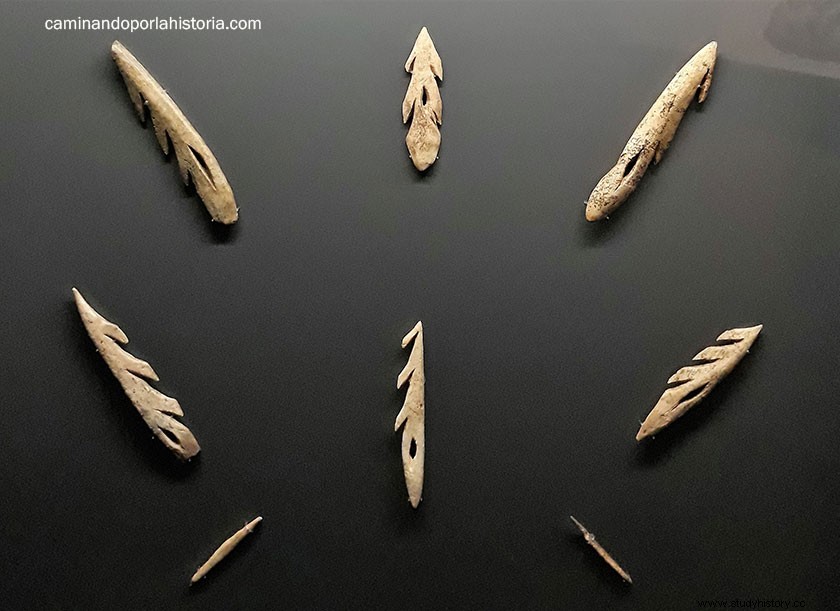
Collection of Magdalenian harpoons
The men and women of the Magdalenian.
Although it may not be necessary to recall it, to say that we are talking about our species, Homo Sapiens, who after the disappearance of Homo Neanderthal became the sole protagonist of the final periods of the Upper Paleolithic.
The studies that have been carried out on their way of life reveal a society with a series of values that need to be emphasized. Our Magdalenian ancestors lived together in small bands of approximately 25 individuals, in that number we must count about five families that had a certain dependency among their members. To avoid inbreeding, one of the supposed evils that caused the disappearance of the Neanderthal, they had contact with another five or six bands, which would generate about 150 individuals in which to find the necessary mixture or outbreeding for the continuity of the species. Finally, for the necessary exchange of products, there were sporadic contacts with gangs at the regional level.
Going back to the values, highlight that there were no leaders or bosses, the decisions to be made were easy, in meetings of several gangs the necessary measures were taken for understanding, from where to go to hunt or prepare the harvest campaign of some vegetable, of course wild. These meetings were held in places equipped for it, highlighting the Great Hall of Polychromes of Altamira, or the entrance to the cave of the Castle. Although there is no complete evidence that equality between men and women could be the general trend, there is no conclusive evidence that hunting was exclusively a men's thing. At least in the Magdalenian since the advent of thrusters, hunting was a matter of skill and not strength. They took care of the elderly and the needy, although life expectancy was about 30 years, that does not mean that there were no elderly, since the average fell due to high infant mortality.
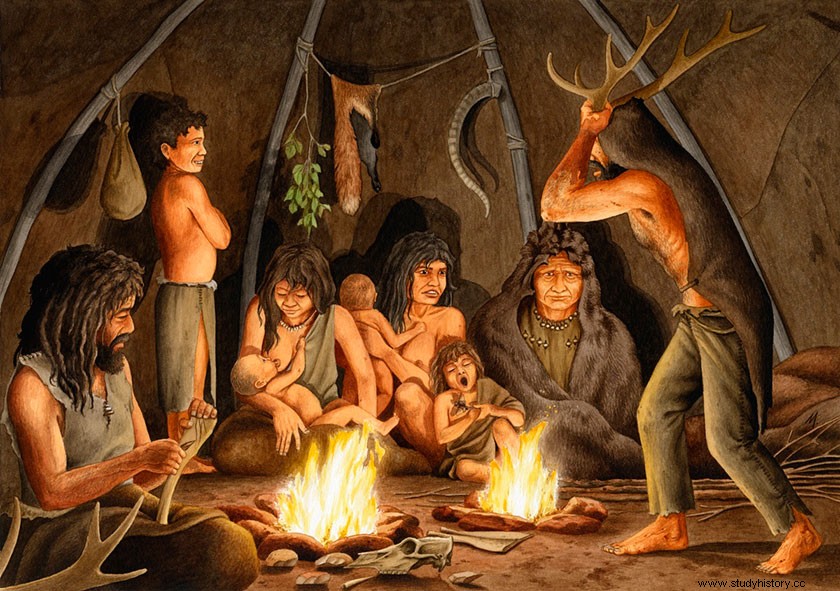
Recreation of a familiar scene in the Magdalenian
As is known, these bands did not live inside the caves, but in their vicinity. It is also evident that they were still nomads, but the periods of occupation of the same place continued to grow. According to some studies in the Cantabrian valley of Asón they could even be annual, to take advantage of all the available resources in the four seasons. In this aspect we can speculate that they even had some kind of calendar, remembering the red dots that mark out a large area of the Cueva del Castillo. The settlements were carried out in the middle areas of the mountains to have a good control of the valleys, and in them there were separate areas for the elaboration of tools, food preparation and rest areas.
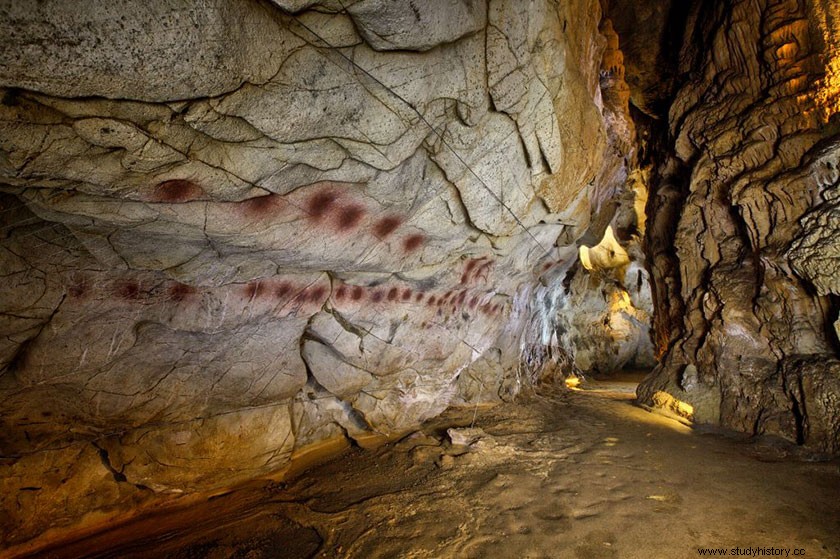
Points of one of the rocks of the Cueva del Castillo (calendar?)
They possibly had a much better diet than their Neolithic descendants. To the consumption of meat, mainly in the Bay of Biscay of deer and goats to a lesser extent, we must add fishing and the collection of molluscs. It is evident that they had a higher vegetable consumption than we might think, but evidently this has not left an archaeological record.
The Cantabrian Magdalenian artists.
But if our ancestors who lived at the end of the Paleolithic stood out for something, it was their ability to become true artists. The men and women of this geographical space not only left their mark on us in the caves, but also on multiple supports of different types. The least important thing is to know the reason that led them to do it, at present this aspect has no importance for experts in Paleolithic Art.
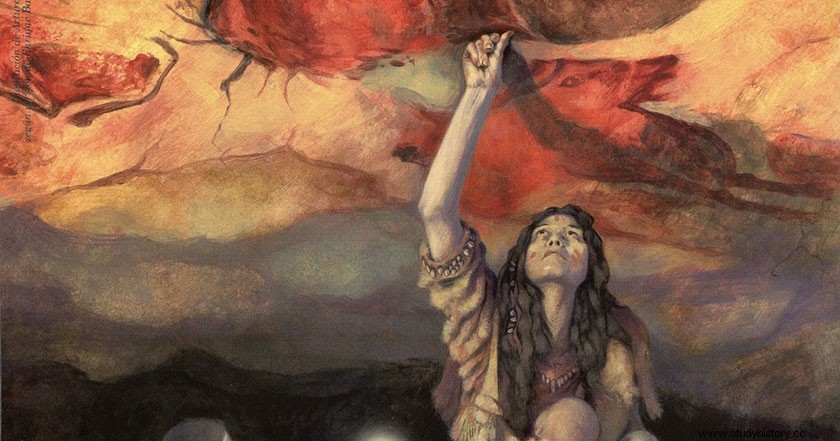
Mobiliary art.
Note that it is known by the name of prehistoric furniture art, anyone who, as its name indicates, can be transported. This type of art is not exclusive to the Magdalenian, but we can say that this period shows a greater number of these objects. They are undoubtedly the expression of the high development that Magdalenian society reached in aspects such as religiosity, symbolism and especially individualism as a particularity within the group.
This art was reflected in personal ornaments, amulets, and especially in all kinds of tools. The most used supports were stone, bone or animal antlers, but also in all kinds of mollusk shells. Through recordings, paintings, perforations or abrasions they were adorned with all kinds of symbols, and above all with animal figures. Of the importance that the men and women of the Magdalenian gave to these objects, we can point out the presence in Cantabria of shells of Mediterranean molluscs, which confirm long-distance contacts.
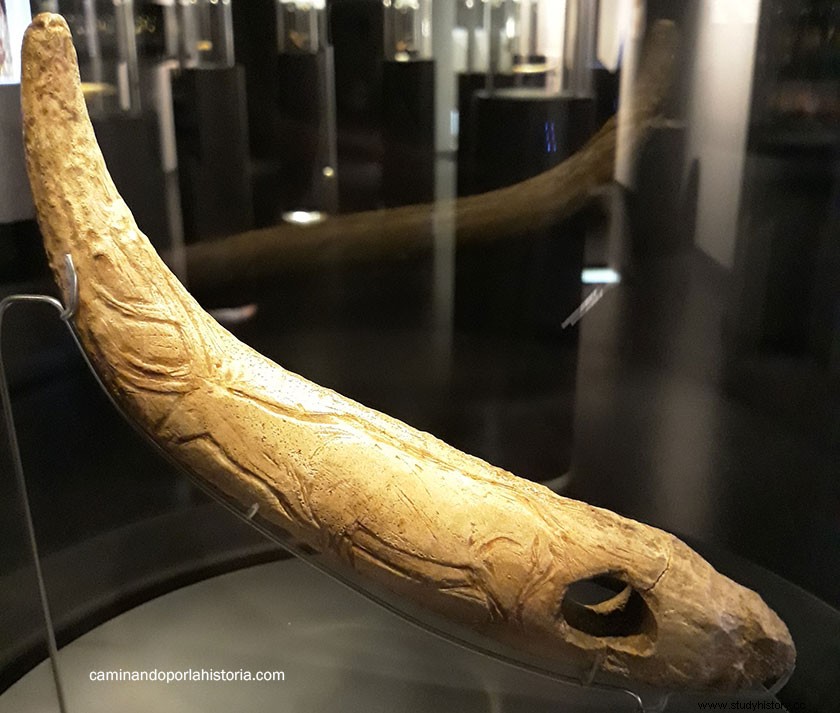
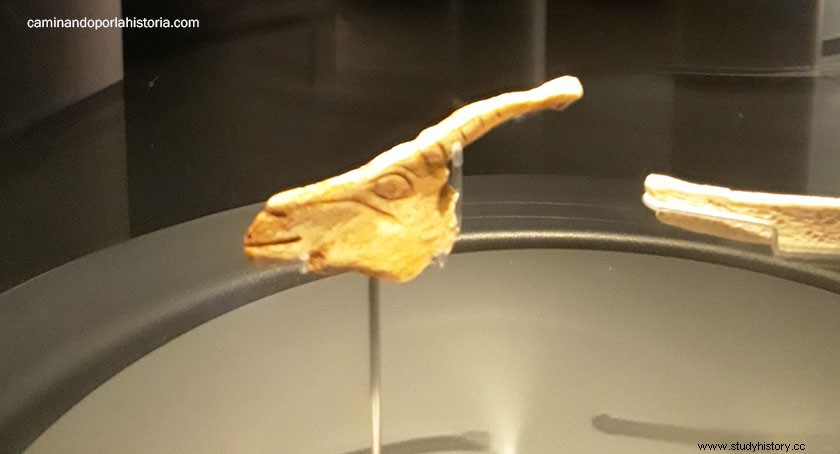
The examples would be endless, but it is best to observe them in situ, highlighting in this regard the Museum of Prehistory and Archeology of Cantabria, located in Santander, as one of the places with the greatest presence of such objects. I invite you to get to know it a little better on its website:museosdecantabria
Cave art.
With the permission of the above, we are before the masterpieces of the Magdalenian artists. Although today the possibility that the Neanderthal also materialized prehistoric paintings is beginning to be studied, these are an achievement of our species, Homo Sapiens, since its appearance specifically in Western Europe 40,000 years ago. But it will be in this Magdalenian period when the evolution of this type of parietal art is completed. The animal figures, the most represented, are completed with all kinds of details, the eyes, ears, hooves are painted and the figures are endowed with enormous movement. Animals are no longer just a symbol, since these artists manage to give them movement through, for example, painting the manes of horses. Scenes are even painted with several of them interacting with each other.
Although the places chosen for these representations were very varied from a simple rock in the middle of a forest, to any rocky shelter, the favorite place was inside the caves, where the light did not come except through the marrow lamps carried by these artists. They were able to take advantage of any crack or protuberance in the rock, to give it a special meaning or endow the figures represented with volume. We must think that most of these works of art were made by painting, but we cannot forget the use of engraving, for example by means of burins.
The materials used to paint should not have been the most important thing for them, this aspect is evident in the proximity of the resources. That is to say, if they had iron oxide, the paint acquired reddish or yellowish colors, on the other hand, if they had manganese oxide on hand, the paint was black, the latter color was also obtained by means of charcoal left by burned wood in homes. . It should be noted that the minerals were dissolved mainly in water, for application, among other methods, with brushes, or simply with the fingers or the whole hand to fill in the represented animals.
Going back to the beginning, remember that we are talking about Cantabria, it is not to detract from other areas, since there are paintings of this type in the rest of the communities of Spain, France, other places in Europe, and even the world. But Cantabria is spectacular in this sense, in addition the designation as a World Heritage Site provided a budget to adapt the caves to visit them and learn about these paintings. It is evident that Altamira is the cathedral of Magdalenian art, but the high number of visits meant that they were restricted and only the lucky ones can see them through a lottery. The rest must be satisfied with the spectacular copy that can be seen in their museum, but honestly, in my humble opinion, it is not the same.
So my advice is to go to the different caves where you can see the paintings in situ. El Pendo, Covalanas, Las Monedas or Chufín are wonderful examples. But if you force me to recommend one, I prefer the Cueva del Castillo in Puente Viesgo, with 150,000 years of occupation, it is undoubtedly the best example to learn about the evolution of prehistoric artists. In it there are paintings with about 40,000 years, and many others from the Magdalenian. The guided tour is excellent, in small groups and with the very personalized attention of the local guides.
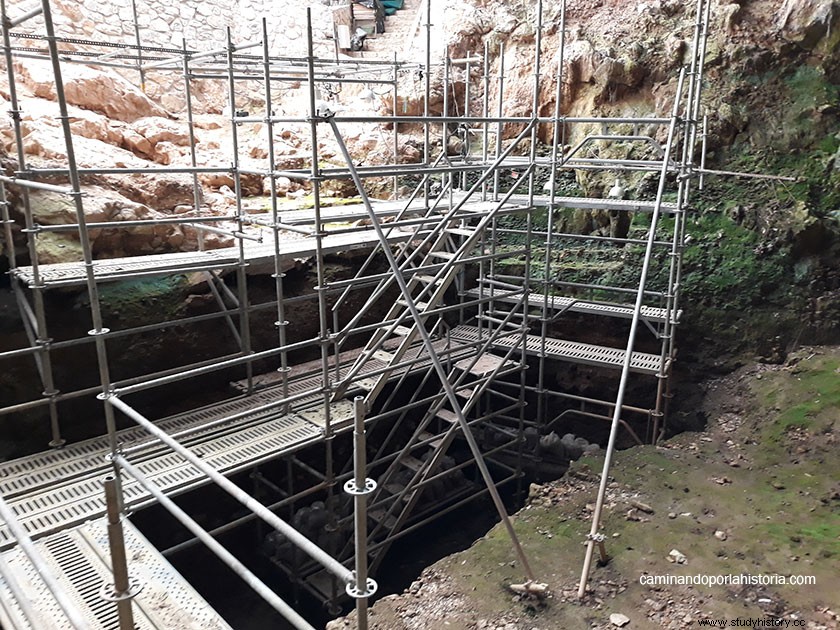
Excavations at the entrance of the Cueva del Castillo are continually giving news due to the great occupation to which it was subjected in prehistory.
Finally, I invite you to visit the website where you can make a reservation for these visits. It is very complete and gives great information about all of them:caves.culturadecantabria
More info:
Ancient Prehistory of the Iberian Peninsula, Coor. Mario Menéndez, Ed. Uned, 2012.
